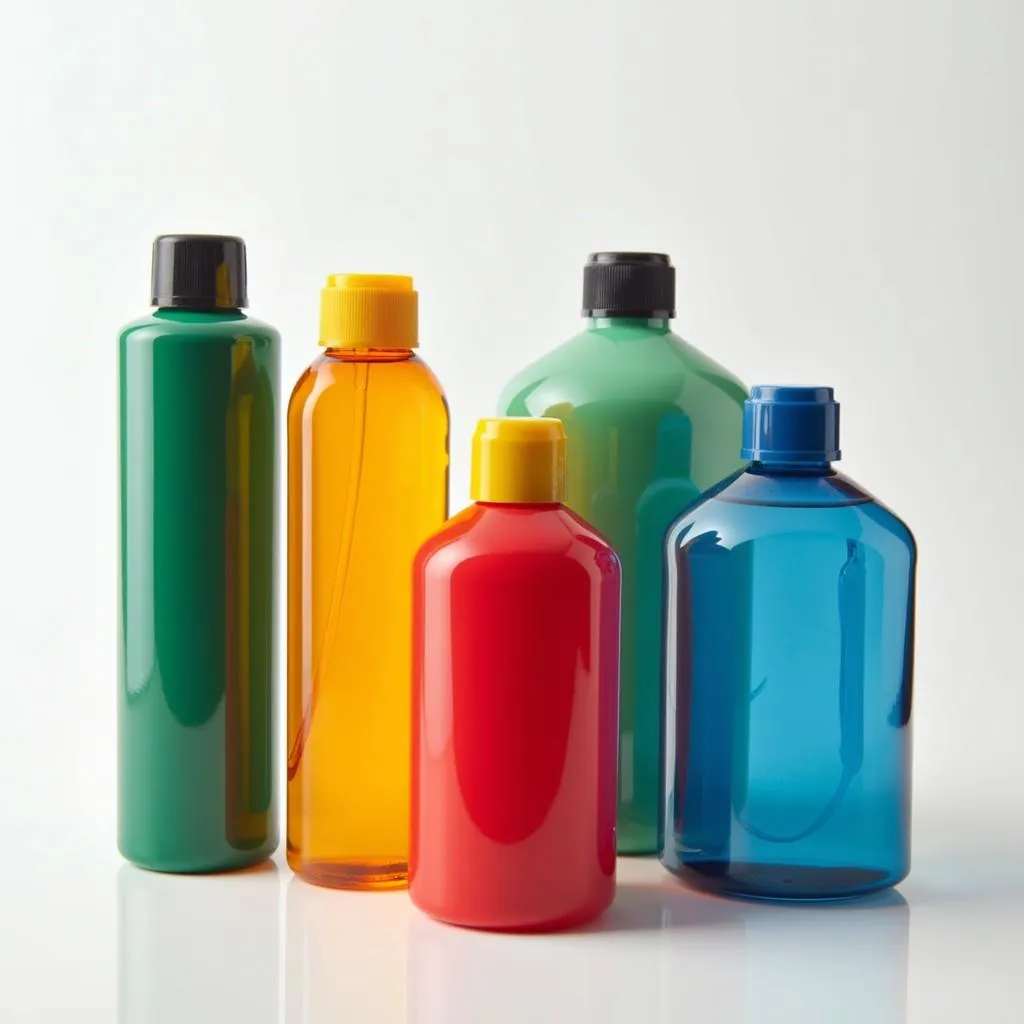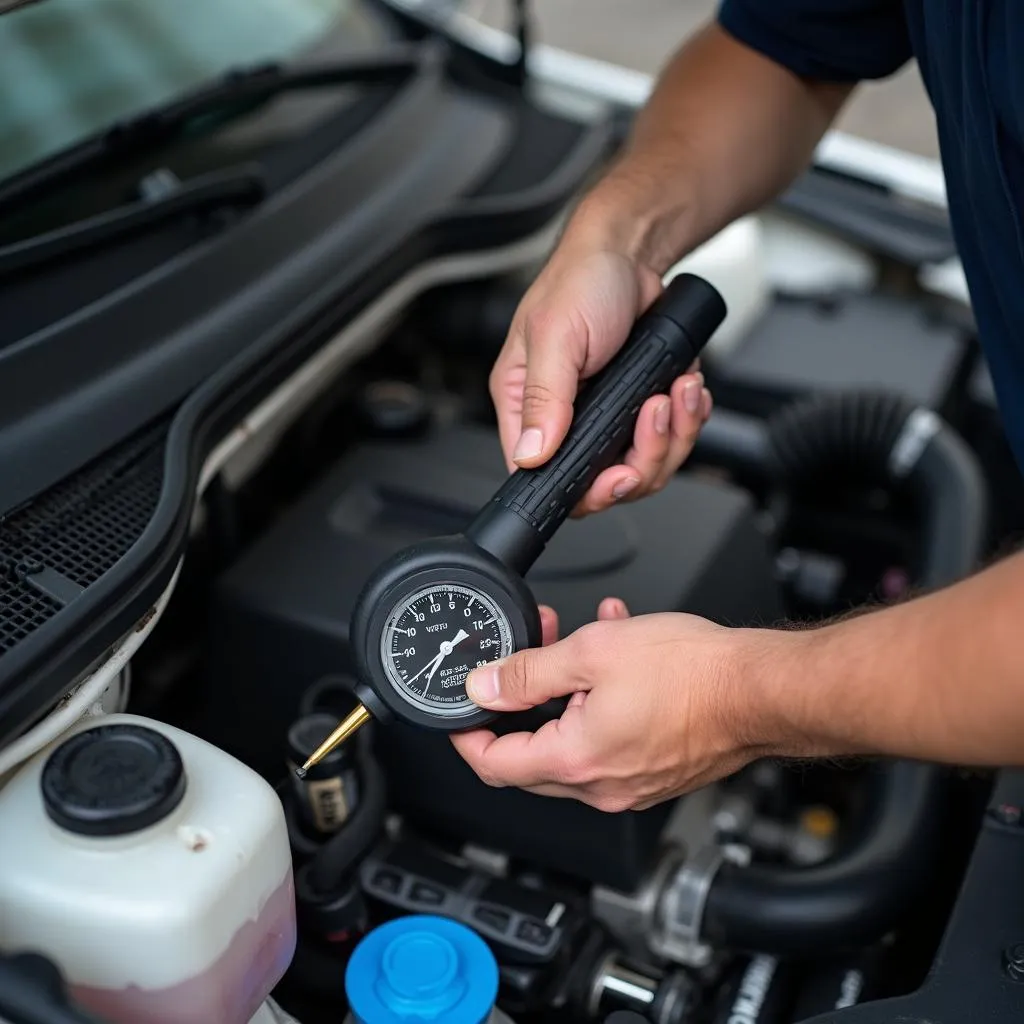Radiator fluid, also known as coolant, plays a vital role in regulating your engine’s temperature. But have you ever wondered about its color and what it signifies? Understanding the color of your radiator fluid can provide valuable insights into the health of your cooling system.
Decoding the Rainbow: Radiator Fluid Colors and Their Meanings
While we often associate coolant with a bright green hue, it actually comes in a spectrum of colors, each indicating a different formulation and purpose. Let’s dive into the rainbow of radiator fluid colors and unravel their secrets:
-
Green: Traditionally, green has been the most common coolant color. It typically signifies conventional inorganic additive technology (IAT) coolant. While effective, green coolant requires replacement every 2 years or 36,000 miles.
-
Orange: Orange coolant generally indicates an extended life organic acid technology (OAT) coolant. It boasts a longer lifespan than green coolant, lasting up to 5 years or 150,000 miles.
-
Yellow: Similar to orange, yellow coolant often represents an OAT formula with extended service life. However, always refer to your owner’s manual or the product label for confirmation.
-
Red: Red can be a bit trickier, as it represents both IAT and OAT coolants. Some manufacturers use red for their long-life coolants, while others utilize it for conventional formulations.
-
Pink: Pink coolant often indicates a type of OAT coolant designed for specific vehicle makes, like Toyota or Lexus. These formulations may offer superior protection for particular engine components.
-
Blue: Blue coolant typically signifies another variation of OAT coolant. Like other long-life options, it offers extended service intervals compared to conventional green coolant.
 Radiator fluid bottles in various colors
Radiator fluid bottles in various colors
What If My Radiator Fluid Isn’t the Right Color?
Discovering a different color in your radiator fluid than what’s recommended for your vehicle can signal a few potential issues:
-
Mixing Coolants: Mixing different coolant types can lead to a chemical reaction, forming a gel-like substance that clogs the cooling system and causes overheating.
-
Rust or Contamination: A rusty brown color can indicate rust within the cooling system, while a milky or oily appearance suggests contamination from oil or transmission fluid.
-
Coolant Breakdown: Over time, coolant can break down and lose its effectiveness, leading to a color change and reduced cooling performance.
 A mechanic inspecting the radiator fluid in a car
A mechanic inspecting the radiator fluid in a car
When in Doubt, Consult the Experts
Navigating the world of radiator fluid colors can be complex. When in doubt, always refer to your owner’s manual for the recommended coolant type and color for your vehicle. If you notice any unusual color changes or suspect a problem with your cooling system, consult a qualified mechanic for a professional inspection and diagnosis.
FAQs
1. Can I add green coolant to orange coolant?
It’s not recommended to mix different coolant types, as it can lead to harmful chemical reactions and damage your cooling system.
2. How often should I flush my radiator fluid?
Refer to your owner’s manual for specific recommendations, but generally, it’s advisable to flush your coolant every 2-5 years or as per the manufacturer’s guidelines.
3. What happens if I use the wrong coolant color?
Using the wrong coolant can lead to corrosion, overheating, and reduced cooling system efficiency. It’s crucial to use the coolant type and color specified by your vehicle manufacturer.
4. Can I mix different brands of the same coolant color?
While it’s generally safer to stick to the same brand, mixing different brands of the same coolant type and color is usually acceptable. However, always double-check the product labels for compatibility.
5. My coolant is clear. Is that normal?
Fresh coolant is typically clear or has a very light tint. However, if your coolant is clear and you haven’t recently flushed the system, it could indicate a problem. Consult a mechanic to investigate further.
Need Expert Assistance?
For all your radiator fluid and car maintenance needs, contact us at:
Phone: 0373298888
Email: [email protected]
Address: 86 Cầu Giấy, Hà Nội
Our team of experts is available 24/7 to provide you with the best service and support.

